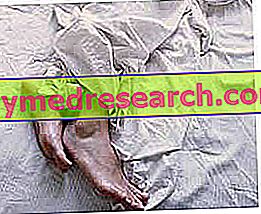Generality
Guinea fowl or guinea fowl is an avian race belonging to the Galliformes Order, family Numididae, Genus Numida ; there are three species: the meleagris (common guinea fowl), the mitrata (faraona mitrata) and the cristata (guinea fowl with tuft). Of all, the most raised is undoubtedly the common guinea fowl, zoologically framed with the binomial nomenclature of Numida meleagris .

The guinea fowl, or rather its wild ancestor, is a gallinaceous native of Numidia or Africa agostina, a province of the ancient Roman Empire currently identifiable with North Africa; in these areas, the guinea fowl still lives in the wild. Its massive diffusion in the European continent took place before the XIII century AD, while, due to the sailors and maritime merchants, it was introduced in the Americas only from the XIV AD onwards.
The guinea fowl is medium to large in size, more than the hen and about the same as the pheasant or the adult rooster. The color of the plumage is dark, oscillating from black to gray to turchiniccio, and pigmented with white spots. NB : The domestic guinea fowl has a lighter plumage than the brada, so much so that the races of S. Domingo and Jamaica possess the whole breast of almost white color. From the morphological point of view, the guinea fowl has a short, convex beak curved towards the tip and covered by a membrane at the base; the nostrils are placed laterally and are divided internally by a cartilage. The head is sometimes covered with feathers and sometimes naked (variable appearance), above provided with a calloused tubercle and under the throat with fleshy or dark red "carnuncole". The legs of the guinea fowl are smooth, without spurs in both the male and the female, and provided with three front fingers joined by a membrane; posterior to the tarsus we note a fourth posterior finger that rests with the nail on the ground. The guinea fowl's tail is short and hanging.
The guinea fowl has gregarious habits; during the day it is usual to hang around the springs of water while at night it tends to seek shelter (in the bush, on the branches, or in the elevations of the hen house). Curious to learn that, despite its larger size, the guinea fowl has a shorter intestinal tube than the hen, partly justifying the greater food need that characterizes it. The membranes that, placed between the toes of the legs, would indicate a certain propensity to aquaticity, as well as the brevity of the wings, highlight the lack of familiarity of the animal on the fly. Guinea fowl feeds mainly on worms and seeds.
In captivity, the guinea fowl is NOT easy to breed; it has a particularly combative character and, except for an associated growth since chicks, it does not cohabit with chickens and hens which, following the clashes, regularly come out damaged. Being able to conquer a certain harmony in the henhouse, it is however possible to hybridize the guinea fowls with the hens, but not with the pheasants (wild and not). Despite being characterized by its North African origins, the guinea-fowl tolerates brilliantly much lower temperatures than the supra-equatorial ones, which is why its breeding is quite important also in the Italian peninsula.
Gastronomic aspects and nutritional characteristics of guinea fowl meat
Meat and eggs are consumed in the guinea fowl (which produces up to a dozen at a time).
From the organoleptic and gustatory point of view, the guinea fowl meat is a sort of compromise between that of the pheasant and that of the chicken or the turkey. The difference in consistency and flavor between wild and farmed guinea fowl is however of considerable magnitude.
While the eggs are consumed exactly like those of hen or turkey (or quail or duck or goose), the meat of guinea fowl (especially if caught and not bred) would need a good aging treatment and, sometimes, even of a short marinating process. The guinea fowl is very suitable for baking and grilling. Appropriately and MINUZIOUSly deboned, it forms the basis for composing highly valuable rolls, especially if enriched with its eggs (sodas), spinach and other boiled vegetables. In Emilia-Romagna and northern Marche, the guinea fowl (such as the old hen, the ossobuco and the beef muscle, as well as celery, carrots and onion) is an almost irreplaceable ingredient for the formulation of the meat broth (necessary for the cooking of tortellini, cappelletti, passatelli and other). The guinea fowl breast can represent a valid substitute for that of the other most frequently used avian species, even if the retail price is certainly less accessible.
From a nutritional point of view, the guinea fowl meats are almost comparable to those of other avian species; a greater (albeit slight) fatness of the muscle is evident, while the skin is decidedly more substantial; after all, this is why the guinea fowl is frequently used for the preparation of meat broth.
The energy contribution of the guinea fowl, on the whole, is rather moderate and places it unequivocally among the lean meats. Proteins are abundant and of high biological value; they are characterized by the prevalence of amino acids: glutamic acid, aspartic acid, leucine and lysine; the limiting one is tryptophan.
Fats contained in the meat of the guinea fowl are few; on the other hand, the skin is very rich, as is cholesterol. The fatty acids of the meat are well distributed and with a slight prevalence of the monounsaturated ones.
From a saline point of view, a fair amount of iron is appreciated, while as far as vitamins are concerned (as for other meats) the content in water-soluble molecules of group B, especially niacin (vitamin PP), stands out. NB : Guinea fowl is also a good source of cobalamin (vit. B12), essential for the prevention of certain fetal complications in pregnant women.
Nutritional values
Nutritional composition of the Pharaoh - Reference values of the INRAN Food Composition Tables
| Comparison Faraona, thigh, with skin, raw; Guinea fowl, thigh, without skin, raw; Guinea fowl, leg, without skin, baked in the oven; Guinea fowl, breast, skinless, raw; Guinea fowl, breast, without skin, baked in the oven; | ||||||
| Chemical composition and energy value of foods per 100g of edible portion | Guinea fowl, leg, with skin, raw | Guinea fowl, leg, without skin, raw | Guinea fowl, leg, without skin, baked | Guinea fowl, breast, skinless, raw | Guinea fowl, chest, without skin, baked in the oven | |
| Edible part | 85.0% | 78.0% | 78.0% | 100.0% | 100.0% | |
| water | 71, 6g | 72, 4g | 59, 1g | 74, 2g | 66, 9g | |
| Protein | 24, 3g | 24, 0g | 34, 4g | 25, 8g | 30, 7g | |
| Lipids TOT | 3, 8g | 3, 3g | 6, 1g | 1, 9g | 2.5g | |
| B.C. saturated fats | - mg | 1, 05mg | 2, 00mg | 0, 62mg | 0, 80mg | |
| B.C. monounsaturated fats | -mg | 1, 19mg | 2, 20mg | 0, 69mg | 0, 93mg | |
| B.C. polyunsaturated fats | - mg | 0, 87mg | 1, 54mg | 0, 50mg | 0, 89mg | |
| Cholesterol | 71, 0mg | 51, 0mg | 99, 0mg | 32, 0mg | 39, 0mg | |
| TOT Carbohydrates | 0.3g | 0.3g | 0.3g | 0.2g | 0.2g | |
| Starch / Glycogen | 0.3g | 0.3g | 0.3g | 0.2g | 0.2g | |
| Soluble sugars | 0.0g | 0.0g | 0.0g | 0.0g | 0.0g | |
| Dietary fiber | 0.0g | 0.0g | 0.0g | 0.0g | 0.0g | |
| Power | 133, 0kcal | 127, 0kcal | 194, 0kcal | 121, 0kcal | 146, 0kcal | |
| Sodium | 97, 0mg | 100, 0mg | 180, 0mg | 50, 0mg | 70, 0mg | |
| Potassium | 325, 0mg | 340, 0mg | 460, 0mg | 340, 0mg | 330, 0mg | |
| Iron | 1.5mg | 1, 6mg | 2, 8mg | 0, 8mg | 0, 8mg | |
| Football | 8, 0mg | 10, 0mg | 11, 0mg | 10, 0mg | 11, 0mg | |
| Phosphorus | 120, 0mg | 170, 0mg | 290, 0mg | 170, 0mg | 210, 0mg | |
| Thiamine | 0, 29mg | - mg | - mg | 0, 14mg | 0, 20mg | |
| Riboflavin | 0, 35mg | - mg | - mg | 0.15 mg | 0, 16mg | |
| Niacin | 5, 10mg | - mg | - mg | 9, 10mg | 11, 00mg | |
| Vitamin A | tr | tr | tr | tr | tr | |
| C vitamin | 0, 0mg | 0, 0mg | 0, 0mg | 0, 0mg | 0, 0mg | |
| Vitamin E | - mg | - mg | - mg | - mg | - mg | |



